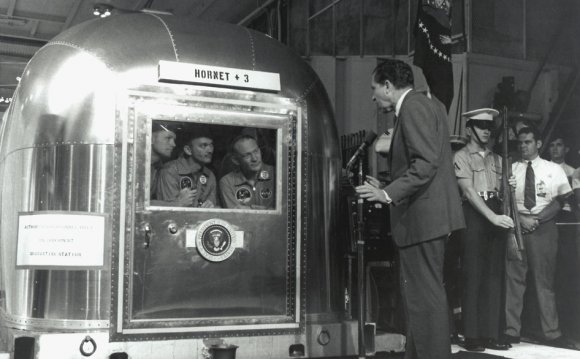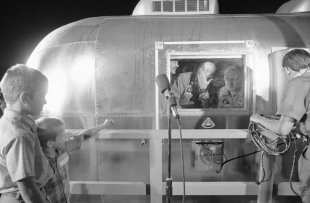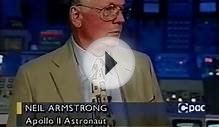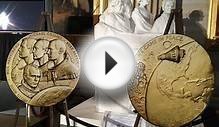
 Neil Armstrong (blowing a kiss to his sons) is flanked by Michael Collins and Buzz Aldrin on July 27, 1969 at Ellington Air Force base in Houston, Tex. On July 24, the Apollo 11 astronauts returned from their historic trip to the moon, but due to infection fears, they were quarantined for 21 days.
Neil Armstrong (blowing a kiss to his sons) is flanked by Michael Collins and Buzz Aldrin on July 27, 1969 at Ellington Air Force base in Houston, Tex. On July 24, the Apollo 11 astronauts returned from their historic trip to the moon, but due to infection fears, they were quarantined for 21 days.
Smithsonian notes that this process was designed to prevent “deadly lunar microbes” from contaminating the population on Earth:
In 1963, the National Academy of Sciences, anxious to guard against invisible invaders, called for a way to isolate the Apollo astronauts upon their return from a series of planned Moon landings. Accordingly, NASA developed the Mobile Quarantine Facility (MQF), essentially a highly modified, wheelless, 35-foot vacation trailer equipped with elaborate air ventilation and filtration systems. The Airstream Company built four of them at a total cost of $250, 000. Given the futuristic form of the Airstream, with its aerodynamic profile and gleaming aluminum sheathing, the choice could not have been more aesthetically congruent. “One of the units was destroyed after years of neglect, ” says Allan Needell, curator of the Apollo collection at the Smithsonian’s National Air and Space Museum (NASM). “But the other three have survived. The facility now on display at NASM’s Udvar-HazyCenter was the one used to isolate the three-man crew of Apollo 11 upon splashdown.”
By July 1971’s Apollo 15 lunar landing, the piece adds, “the fear of pathogens had receded and the use of trailers was abandoned.”
RELATED VIDEO












